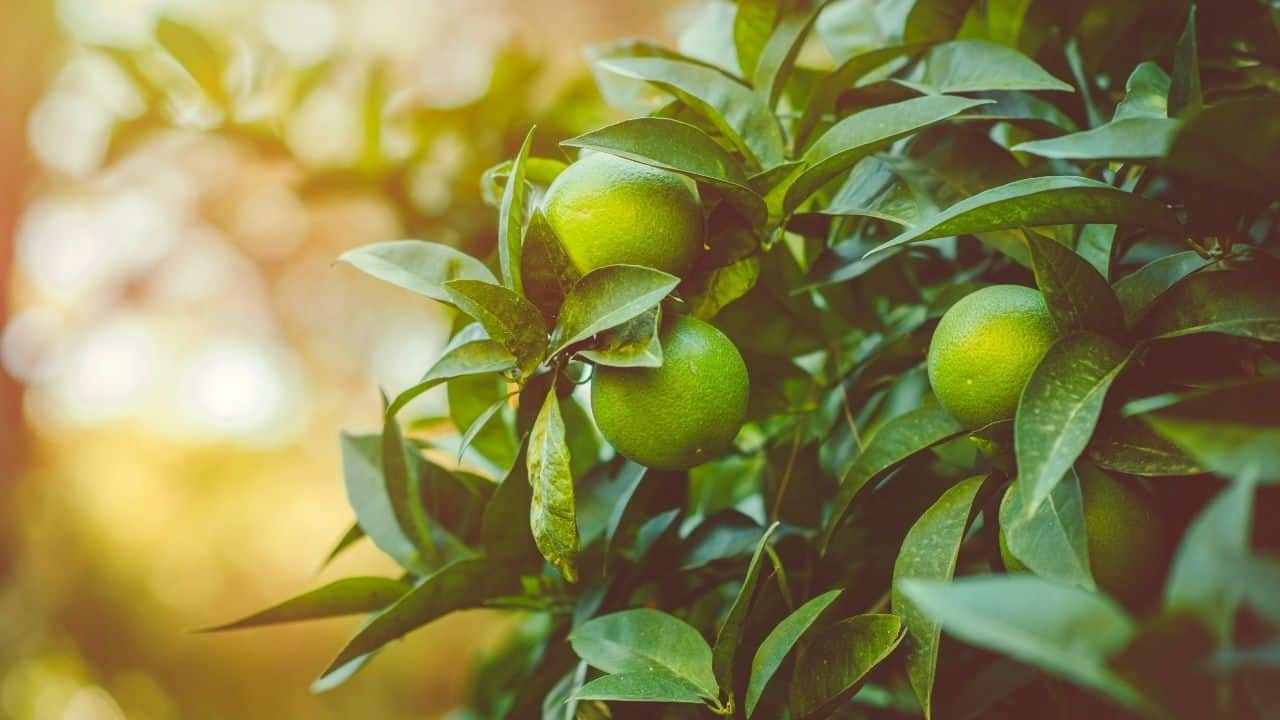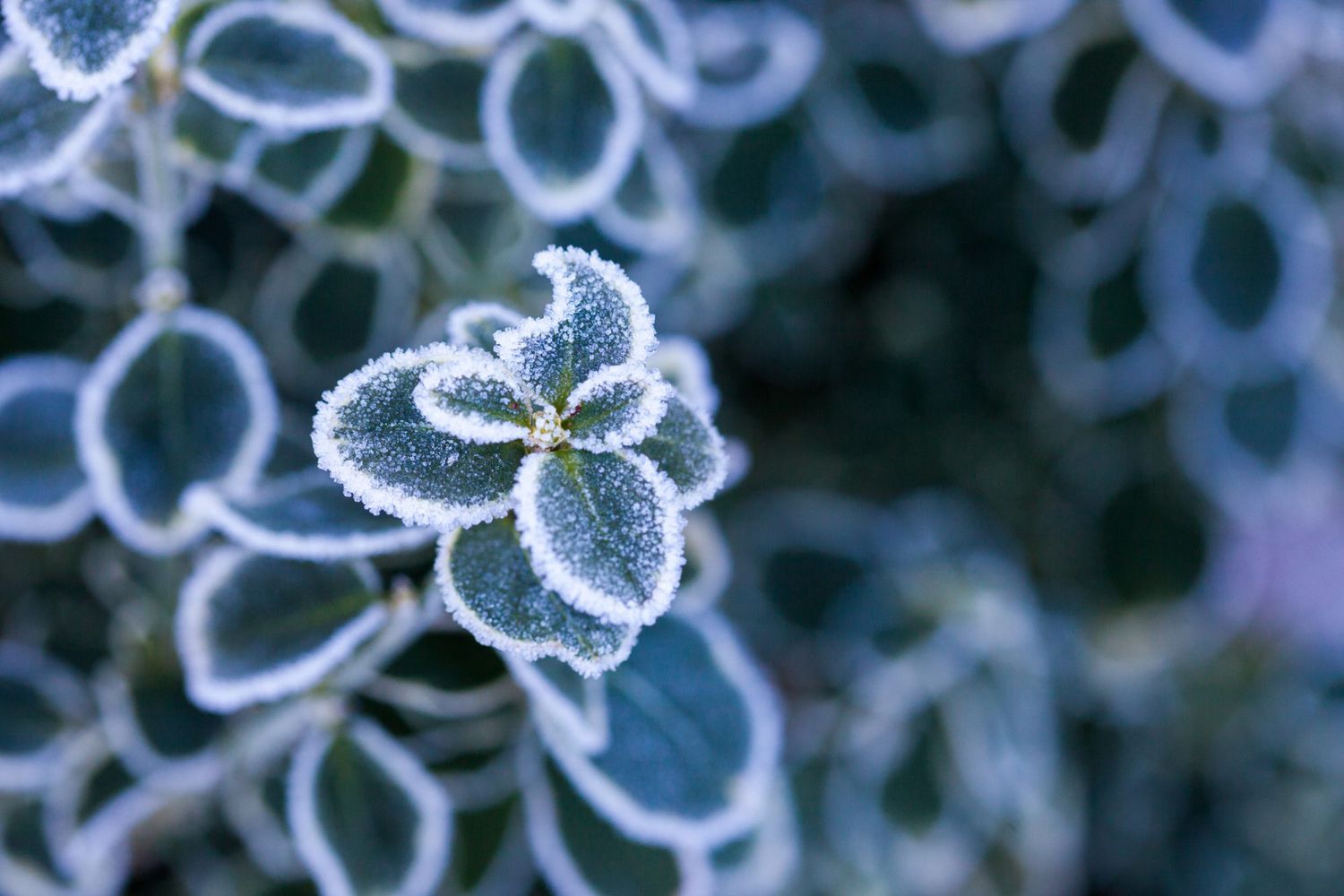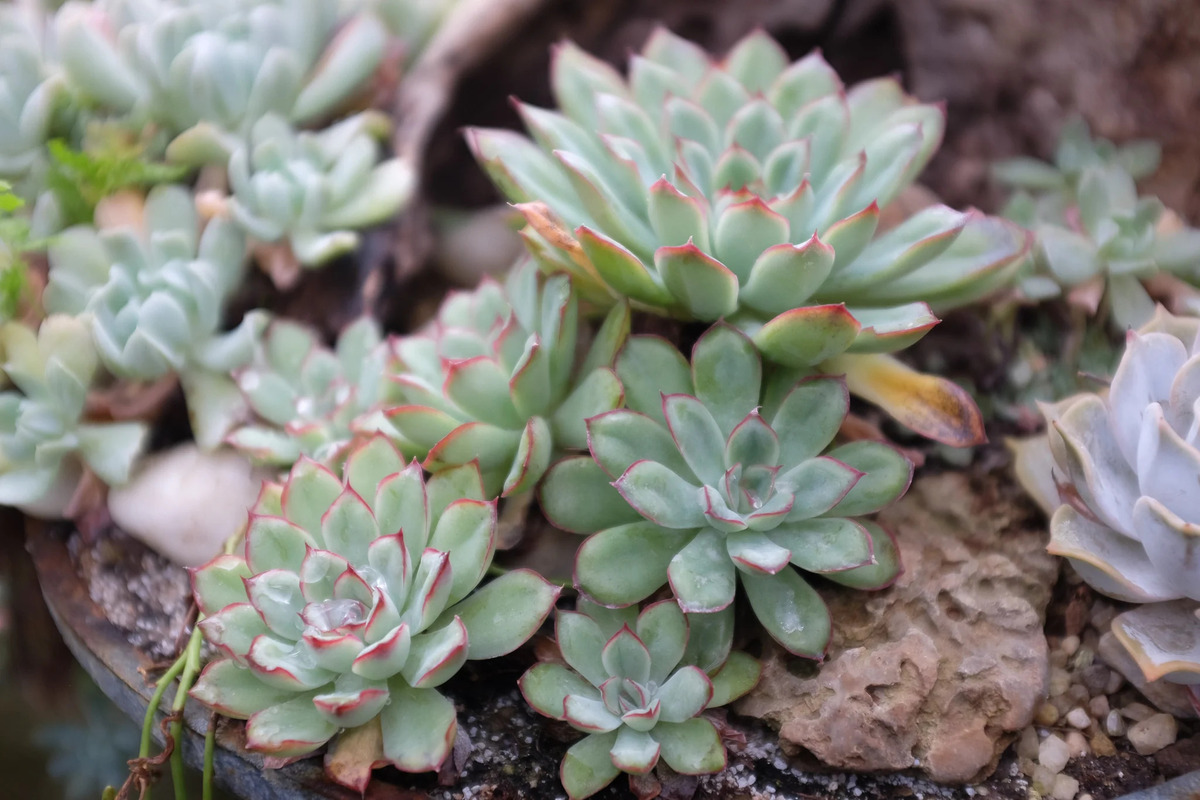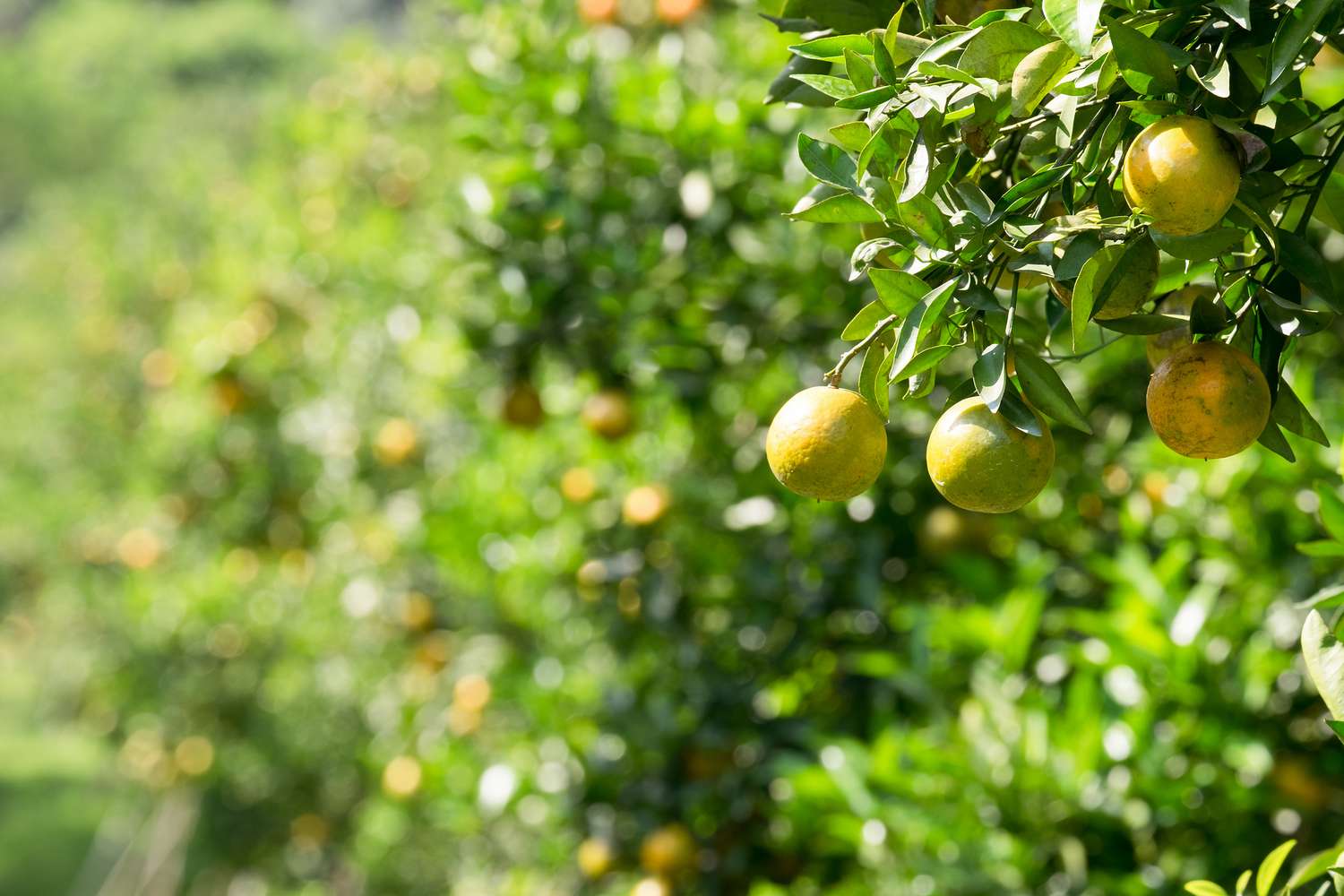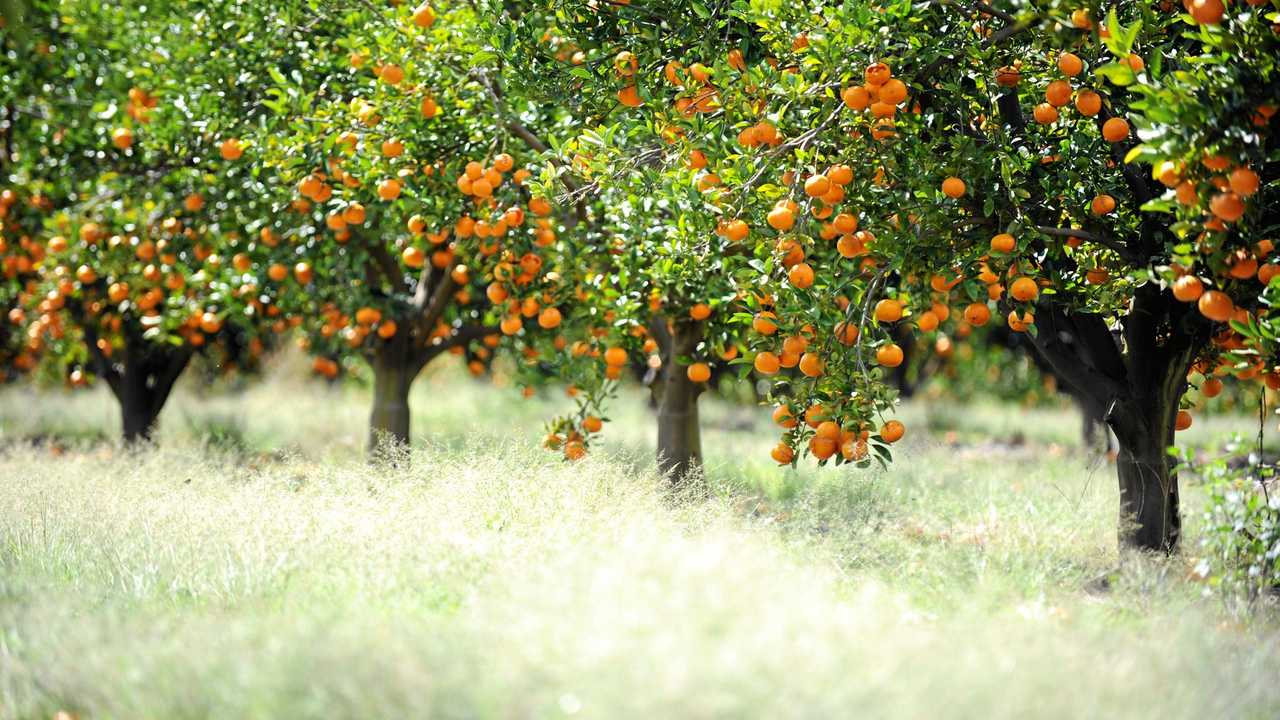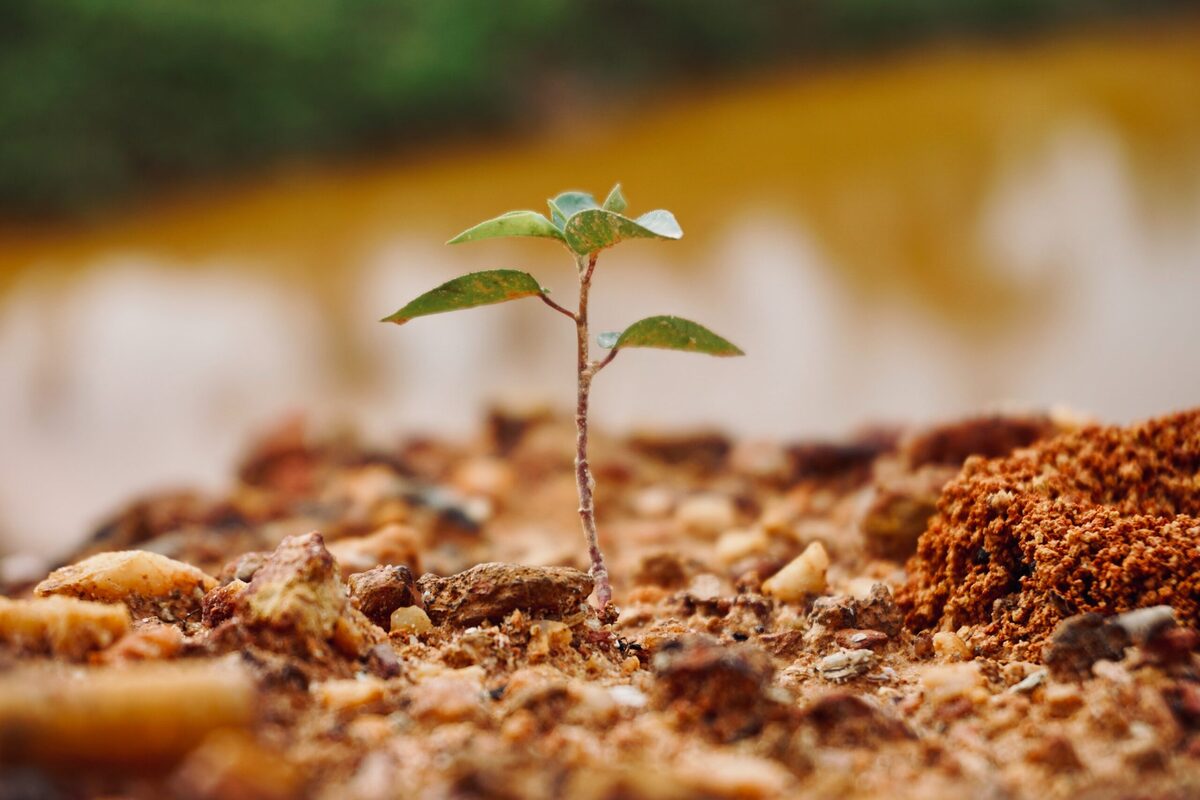Home>Gardening Techniques>Plant Care>How To Protect Citrus Trees From Frost


Plant Care
How To Protect Citrus Trees From Frost
Published: October 28, 2023
Learn effective plant care tips to protect your citrus trees from frost damage and ensure their healthy growth throughout the year.
(Many of the links in this article redirect to a specific reviewed product. Your purchase of these products through affiliate links helps to generate commission for Chicagolandgardening.com, at no extra cost. Learn more)
Table of Contents
- Introduction
- Understanding Frost Damage to Citrus Trees
- Choosing the Right Citrus Varieties for Frost Protection
- Proper Site Selection for Citrus Trees
- Watering Techniques to Protect Citrus Trees from Frost
- Mulching Methods for Citrus Tree Protection
- Using Protective Frost Covers for Citrus Trees
- Pruning and Canopy Management for Frost Protection
- Monitoring and Early Detection of Frost Damage
- Emergency Measures for Citrus Tree Protection During Frost Events
- Conclusion
Introduction
Welcome to our comprehensive guide on how to protect citrus trees from frost. Citrus trees are a popular choice for home gardeners due to their vibrant foliage, fragrant flowers, and delicious fruits. However, these trees are vulnerable to frost damage, which can have devastating effects on their health and productivity.
Frost occurs when temperatures drop below freezing, causing ice crystals to form on the plant’s tissues. This can lead to cell damage, wilting, and even death of the citrus tree. The severity of frost damage depends on several factors, including the duration and intensity of the cold temperatures, the age and maturity of the tree, and the specific variety of citrus.
In this guide, we will explore various strategies and techniques to protect your citrus trees from frost damage. From choosing the right citrus varieties that are more resistant to frost, to implementing proper site selection, watering techniques, mulching methods, and the use of protective frost covers – every aspect of citrus tree protection will be covered in detail.
We will also discuss the importance of pruning and canopy management for frost protection, as well as monitoring and early detection of frost damage. Additionally, we will provide emergency measures that can be taken during frost events to minimize damage to your citrus trees.
By following the expert advice and implementing these protective measures, you can ensure the health and longevity of your beloved citrus trees, enabling them to thrive even in frost-prone areas. So, let’s dive in and learn how to safeguard your citrus trees from the dangers of frost!
Understanding Frost Damage to Citrus Trees
Frost damage can have a significant impact on the health and productivity of citrus trees. It occurs when temperatures drop below freezing, leading to the formation of ice crystals on the plant’s tissues. Understanding the effects of frost on citrus trees is vital for implementing appropriate preventive measures and minimizing potential damage.
One of the primary ways frost damages citrus trees is through cell rupture. When water inside the plant’s cells freezes, it expands, causing the cells to burst. This can lead to wilting, discoloration, and even death of the affected plant tissue.
Another way frost impacts citrus trees is by interfering with the tree’s metabolic processes. Freezing temperatures slow down or halt essential physiological functions, such as photosynthesis and nutrient uptake. This can weaken the tree’s overall health and make it more susceptible to diseases and pests.
The severity of frost damage depends on several factors, including the duration and intensity of the cold temperatures. Citrus trees are most vulnerable to frost damage during prolonged periods of below-freezing temperatures. Short, intermittent frosts are generally less harmful and may only result in minor damage or temporary setbacks.
It’s worth noting that different varieties of citrus exhibit varying degrees of frost tolerance. Some cultivars, such as Satsuma mandarins and kumquats, are more cold-hardy and have a higher tolerance for freezing temperatures. On the other hand, more sensitive varieties like lemons and limes are more prone to frost damage.
Young citrus trees are generally more susceptible to frost damage than mature ones. As trees age and develop thicker bark and stronger root systems, they become more resilient to cold temperatures. However, it’s important to protect young trees during their vulnerable stages to ensure proper growth and establishment.
To assess the extent of frost damage, examine the affected areas for signs of wilting, browning, or discoloration. Severely damaged branches or limbs may appear black or water-soaked. In some cases, the damage may not be immediately visible, and symptoms may only manifest several days after the frost event.
By understanding how frost affects citrus trees and recognizing the signs of damage, you can take proactive measures to protect your trees and mitigate the risk of frost-related harm.
Choosing the Right Citrus Varieties for Frost Protection
When it comes to protecting citrus trees from frost, selecting the right varieties is a crucial first step. Some citrus cultivars are naturally more tolerant of cold temperatures, making them better suited for frost-prone regions.
Satsuma mandarins, for example, are renowned for their excellent cold-hardiness. These citrus trees can withstand temperatures as low as 15°F (-9°C) without sustaining significant damage. Satsumas are a popular choice for areas with colder climates, as they offer a higher chance of survival during frost events.
Other cold-tolerant citrus varieties include kumquats, calamondins, and some hardy hybrid versions. These cultivars have adapted to withstand freezing temperatures and can bounce back more quickly after a frost event.
On the other hand, citrus trees like lemons and limes are generally more sensitive to frost and require extra protection in colder regions. While it’s still possible to grow these varieties in frost-prone areas, it’s important to implement additional protective measures to safeguard them.
Before purchasing citrus trees, research specific varieties that are known to be more cold-hardy and better suited to your regional climate. Consult with local nurseries or agricultural extension services for recommendations tailored to your specific area.
In addition to cold tolerance, consider other factors such as fruit quality and desired flavors when choosing citrus varieties. Some cold-hardy citrus may not produce fruit of the same quality as more delicate varieties. Therefore, it’s important to strike a balance between frost resistance and desirable fruit characteristics.
Growing citrus on dwarf or semi-dwarf rootstocks can also be beneficial for frost protection. By using rootstocks that restrict the tree’s overall size, it becomes easier to cover and protect the entire plant during frost events.
Remember, selecting the right citrus varieties for your specific climate and preferences is essential for minimizing the risk of frost damage and ensuring the long-term success of your citrus orchard.
Proper Site Selection for Citrus Trees
Choosing the right location for planting your citrus trees is crucial for their overall health and their ability to withstand frost events. Proper site selection can provide natural protection and optimize growing conditions for your citrus trees.
Here are some factors to consider when selecting a site for your citrus trees:
- Sunlight: Citrus trees thrive in full sunlight, so choose a location that receives at least 6 to 8 hours of direct sunlight per day. Sunlight is essential for photosynthesis, which is vital for the tree’s growth and vigor.
- Wind exposure: Avoid planting citrus trees in areas that are prone to strong winds. Wind can exacerbate the effects of frost by increasing the rate of heat loss from the plant and causing additional stress to the tree. Consider installing windbreaks, such as fences or hedges, to protect the trees from strong gusts.
- Drainage: Citrus trees prefer well-draining soil to prevent waterlogged roots, which can lead to root rot and other diseases. Avoid low-lying areas or locations with poor drainage, as excessive moisture can make citrus trees more susceptible to frost damage.
- Slope: Opt for a slightly sloped site for your citrus trees. Planting them on a gentle slope allows for better air circulation, reducing the risk of cold air pooling around the trees. Cold air tends to settle in low-lying areas, increasing the chance of frost damage.
- Microclimates: Take advantage of microclimates within your garden or property. Choose areas where the trees may benefit from natural heat sinks, such as south-facing walls or near large bodies of water. These microclimates can provide additional thermal protection against freezing temperatures.
Before planting, it’s also advisable to conduct a soil test to assess its pH level and fertility. Citrus trees prefer slightly acidic soil with a pH range of 6.0 to 7.0. If necessary, amend the soil with organic matter, such as compost, to improve its structure and nutrient content.
By carefully selecting a suitable site for your citrus trees, you can create an optimal growing environment and reduce the risk of frost damage. Remember to consider sunlight, wind exposure, drainage, slope, and microclimates when choosing the perfect location for your citrus orchard.
Watering Techniques to Protect Citrus Trees from Frost
Proper watering is crucial for protecting citrus trees from frost damage. Water acts as a natural insulator, helping to retain heat in the soil and around the roots, which in turn can protect the tree from freezing temperatures. However, it’s essential to implement the right watering techniques to maximize this protective effect.
Here are some watering tips to help safeguard your citrus trees from frost:
- Irrigate before a frost: Water the soil around the base of the tree a day or two before a predicted frost event. This allows the soil to absorb moisture and create a thermal buffer that can help moderate temperature fluctuations.
- Avoid overwatering: While it’s important to provide adequate moisture, avoid excessive watering, as waterlogged soil can lead to root rot and other issues. The goal is to maintain a consistent level of soil moisture without creating waterlogged conditions.
- Water deeply and infrequently: When irrigating citrus trees, aim for deep, thorough watering sessions rather than frequent shallow watering. This encourages deep root growth, which can improve the tree’s overall resilience to frost and other adverse conditions.
- Water during daylight hours: Whenever possible, water the citrus trees during the day rather than at night. This allows the water to soak into the soil and provides ample time for the tree and soil to warm up before nighttime temperatures drop.
- Utilize drip irrigation or soaker hoses: Drip irrigation or soaker hoses are excellent watering tools for citrus trees. They deliver water directly to the root zone, minimizing evaporation and ensuring efficient water distribution. Avoid overhead sprinklers, as these can wet the foliage and increase the risk of frost damage.
- Consider using water-filled jugs or barrels: For smaller citrus trees or potted plants, you can place water-filled jugs or barrels near the trees. These act as thermal mass, absorbing and releasing heat throughout the day and night, providing additional protection against frost.
Regularly monitoring the soil moisture levels is essential to ensure proper hydration without waterlogging. Check the moisture content by sticking your finger into the soil or using a moisture meter to gauge the need for watering.
Remember, the goal of using watering techniques is to create a stable microenvironment around the citrus trees, protecting them from frost damage. By implementing these techniques and providing adequate moisture, you can enhance the chances of your citrus trees surviving and thriving even during frosty conditions.
Mulching Methods for Citrus Tree Protection
Mulching is a valuable technique for protecting citrus trees from frost and providing other benefits to plant health. Mulch acts as an insulating layer, helping to regulate soil temperature, retain moisture, and suppress weed growth. When applied correctly, mulch can contribute significantly to the protection and overall well-being of citrus trees.
Here are some effective mulching methods to consider for citrus tree protection:
- Organic mulch: Organic mulch, such as wood chips, straw, or shredded leaves, is an excellent choice for citrus trees. Apply a layer of organic mulch around the base of the tree, extending it out to the drip line. This will help insulate the soil, reducing temperature fluctuations and providing a protective barrier against frost.
- Thick mulch layer: Apply a layer of mulch that is 2 to 4 inches thick around the citrus tree. This thickness provides effective insulation while allowing airflow to the root zone. Avoid piling the mulch directly against the trunk to prevent moisture buildup and potential pest or disease issues.
- Extend the mulch layer beyond the canopy: Extend the mulch layer beyond the tree’s canopy or outermost branches. This ensures that the tree’s entire root system receives the benefits of the mulch, including insulation and moisture retention.
- Renew mulch regularly: Organic mulch breaks down over time, so it’s important to replenish it periodically. Renew the mulch layer once a year to maintain its effectiveness in protecting the citrus tree from frost and providing other benefits such as weed suppression and soil moisture retention.
- Avoid using plastic mulch: While plastic mulch may offer weed protection, it does not provide the same insulation benefits as organic mulch. Plastic mulch can also trap moisture and create a humid environment that may promote disease development.
- Consider reflective mulch: Reflective mulch, such as aluminum foil or white plastic, can be strategically placed around citrus trees to reflect sunlight and heat onto the tree. This can help raise the ambient temperature and provide additional frost protection.
Remember to monitor the moisture levels in the soil when using mulch. Mulch helps retain moisture, but it’s important to maintain proper irrigation to prevent overwatering or waterlogged soil conditions.
With the proper use of mulching methods, you can enhance the resilience of your citrus trees to frost, improve soil conditions, and promote overall tree health.
Using Protective Frost Covers for Citrus Trees
Protective frost covers are an effective method to shield citrus trees from the damaging effects of freezing temperatures. These covers create a barrier between the tree and the external environment, trapping heat and providing insulation. When properly utilized, frost covers can significantly reduce the risk of frost damage and ensure the survival of your citrus trees.
Here is a step-by-step guide on using protective frost covers for citrus trees:
- Select the right cover: Choose frost covers specifically designed for protecting plants against cold temperatures. These covers are typically made from breathable materials, such as fleece or spun polyester, that allow air and moisture exchange while providing insulation.
- Size and fit: Ensure the frost cover is large enough to completely envelop the citrus tree. It should extend from the top of the tree to the ground, allowing for a snug fit. Avoid leaving gaps or exposed areas that may leave the tree vulnerable to frost damage.
- Timing: Place the frost cover over the citrus tree before the onset of freezing temperatures. Monitor local weather forecasts and be prepared to cover the tree in advance of frost events if possible. Acting proactively is key to maximizing protection.
- Secure the cover: Secure the frost cover in place using stakes, clips, or ties to prevent it from blowing away or shifting during windy conditions. Ensure the cover is taut but not too tight, allowing for some airflow beneath it.
- Monitor and adjust: Regularly check the citrus tree and the frost cover for signs of damage or moisture buildup. Adjust the cover if necessary to maintain proper airflow and prevent the accumulation of excess condensation or humidity.
- Remove the cover: Once the threat of frost has passed, remove the cover during daylight hours to allow the tree to breathe and access sunlight for photosynthesis. However, be prepared to cover the tree again if cold temperatures persist.
During exceptionally cold nights, you can enhance the effectiveness of frost covers by placing an additional heat source under the cover, such as Christmas lights or a small heater. This provides an extra source of warmth to protect the tree from severe cold.
Remember, using protective frost covers requires diligence and monitoring. Regularly assess the weather conditions and be prepared to take action promptly to ensure your citrus trees remain protected.
Pruning and Canopy Management for Frost Protection
Pruning and canopy management play a critical role in protecting citrus trees from frost damage. By implementing proper pruning techniques and maintaining an optimized canopy structure, you can minimize the risk of frost-related harm and improve the overall resilience of your citrus trees.
Here are some key pruning and canopy management practices for frost protection:
- Remove dead or damaged branches: Regularly inspect your citrus trees and prune any dead, broken, or diseased branches. These branches are more susceptible to frost damage and can hinder the overall health and vigor of the tree.
- Thin out the canopy: Dense canopies trap cold air and inhibit natural airflow, increasing the risk of frost damage. Properly thinning out the canopy by selectively removing crossing or crowded branches allows for better air circulation and reduces the chances of cold pockets forming.
- Prune lower branches: Trim the lower branches of citrus trees to raise the canopy and prevent cold air from accumulating near the ground. This helps to keep the tree’s sensitive buds and branches further away from potential frost damage.
- Prune for shape and structure: Prune citrus trees to maintain a well-balanced shape and structure. Avoid excessive upright growth, as it can result in dense canopies that are more susceptible to frost damage. Instead, encourage a more open and spreading growth pattern.
- Prune in late winter or early spring: Timing is crucial when it comes to pruning citrus trees for frost protection. Ideally, perform major pruning during late winter or early spring, before the onset of new growth. Pruning too late in the season can stimulate new growth that is vulnerable to frost damage.
- Avoid heavy pruning before frost events: Minimize major pruning in the weeks leading up to anticipated frost events. Pruning stimulates new growth, which is more susceptible to frost damage. Focus on light maintenance pruning and save major pruning for after the risk of frost has passed.
Remember to sanitize your pruning tools between cuts to prevent the spread of diseases. Clean and sharpened tools make clean cuts, promoting faster healing for the tree.
Through proper pruning and canopy management, you can create a healthier and more resilient citrus tree. A well-maintained and properly pruned canopy improves air circulation, reduces frost vulnerability, and contributes to the overall long-term success of your citrus trees.
Monitoring and Early Detection of Frost Damage
Monitoring your citrus trees for frost damage is crucial for taking timely action and minimizing the long-term effects of freezing temperatures. By regularly inspecting your trees and being vigilant for signs of frost damage, you can intervene early and implement appropriate measures to protect their health.
Here are some key steps to effectively monitor and detect frost damage in your citrus trees:
- Regular visual inspections: Dedicate time to examine your citrus trees on a regular basis, especially after frost events or during periods of cold weather. Look for visible signs of damage, such as blackened or wilted foliage, water-soaked limbs, or browning of the fruit.
- Monitor weather conditions: Stay informed about local weather forecasts and keep track of freezing temperatures in your area. Knowing when frost events are likely to occur allows you to take proactive measures to protect your citrus trees ahead of time.
- Observe post-frost behavior: Even if immediate damage is not evident, observe your citrus trees in the days following a frost event. Symptoms may take some time to appear, so attentively monitor the tree’s response to freezing temperatures.
- Assess leaf and fruit quality: Examine the leaves and fruit of your citrus trees for any abnormalities or changes. Discolored or shriveled leaves, as well as browning or wilting fruit, can indicate frost damage. Additionally, monitor the overall vigor and growth of the tree for signs of stress.
- Check for bud damage: Inspect the buds and new growth on your citrus trees for any signs of damage. Prune off any frost-damaged buds to redirect the tree’s energy to healthy growth areas.
- Keep records: Maintain a journal or log to record observations and changes in your citrus trees over time. This allows you to track patterns, recognize vulnerable areas, and make informed decisions regarding future frost protection strategies.
It’s important to note that young citrus trees or newly planted specimens are more susceptible to frost damage compared to mature trees. Provide extra care and monitoring to these younger trees, implementing protective measures at the first sign of potential frost.
By actively monitoring and detecting frost damage early, you can intervene promptly and provide the necessary care and protection to preserve the health and vitality of your citrus trees.
Emergency Measures for Citrus Tree Protection During Frost Events
During severe frost events, it may be necessary to take immediate and emergency measures to protect your citrus trees from extreme cold temperatures. Implementing appropriate actions can mean the difference between minimal damage and significant losses. Here are some emergency measures for citrus tree protection during frost events:
- Provide temporary heat sources: If possible, use temporary heat sources, such as outdoor heaters or incandescent bulbs, to raise the ambient temperature around the citrus trees. Carefully position these heat sources to prevent direct contact with the foliage or other flammable materials.
- Use frost blankets or tarps: Cover the citrus trees with frost blankets or tarps to create a protective barrier against the cold. Ensure the covers extend to the ground and secure them tightly to prevent heat loss and insulate the trees effectively.
- Apply water as a protective measure: Water the citrus trees thoroughly before the onset of freezing temperatures. As the water freezes, it releases heat, creating a protective ice layer around the tree. This can provide temporary insulation and prevent direct contact between the freezing air and the tree’s tissues.
- Utilize large containers of water: Place large containers of water around the citrus trees. Water acts as a thermal mass, absorbing and releasing heat, helping to moderate temperature fluctuations and provide additional protection against frost damage.
- Create heat-trapping structures: Use temporary structures, such as tents or greenhouses, to trap heat around the citrus trees. These structures can provide additional insulation and protection during extreme cold events.
- Wrapping the trunk: Wrap the trunk of younger citrus trees with burlap or other insulating materials to protect them from freezing temperatures. This helps prevent damage to the delicate bark and cambium layer.
- Remove covers during the day: If temperatures rise during the day, remove the protective covers to allow the trees to receive sunlight and air circulation. This helps prevent excessive heat buildup and allows the trees to “breathe.” Remember to cover them again if freezing temperatures persist at night.
It’s important to remember that emergency measures are temporary solutions and should not be relied upon as long-term frost protection. Once the immediate danger of a frost event has passed, focus on implementing more sustainable protective measures and addressing any potential long-term vulnerabilities in your citrus tree care plan.
By promptly implementing these emergency measures and carefully monitoring weather conditions, you can increase the chances of your citrus trees surviving frost events with minimal damage and ensuring their continued health and productivity.
Conclusion
Protecting citrus trees from frost damage requires careful planning, proactive measures, and regular monitoring. By implementing the strategies outlined in this comprehensive guide, you can enhance the resilience and survival of your citrus trees, even in frost-prone areas.
Start by selecting the right citrus varieties that are better equipped to withstand freezing temperatures. Consider factors such as cold tolerance and fruit quality when choosing the best varieties for your specific climate.
Ensure proper site selection, taking into account sunlight exposure, wind protection, and well-draining soil. This sets the foundation for a healthy growing environment for your citrus trees.
Implement appropriate watering techniques, maintaining consistent but not excessive soil moisture levels. Watering before frost events can create a protective buffer, while avoiding overwatering prevents waterlogged conditions that can be harmful to the trees.
Mulching helps insulate the soil and regulate temperature, reducing the risk of frost damage. Apply organic mulch, renew it regularly, and extend it beyond the canopy to maximize its protective benefits.
Using protective frost covers, particularly breathable materials, create a barrier that traps heat and shields the trees from cold temperatures.
Pruning and canopy management promote better airflow and prevent the accumulation of cold air pockets. Regularly monitor for signs of frost damage, adjust pruning practices, and maintain a disciplined maintenance routine.
During frost events, emergency measures such as temporary heat sources, frost blankets, water application, or heat-trapping structures can provide extra protection to safeguard your citrus trees.
Lastly, vigilant monitoring and early detection of frost damage allow for timely intervention and appropriate care. Regular visual inspections and record-keeping help track changes and guide future protection efforts.
By incorporating these practices, you can ensure the longevity and productivity of your citrus trees, even in challenging frost-prone environments. Remember that protecting citrus trees from frost requires a combination of knowledge, preparation, and timely action. With dedication and careful attention, you can create an environment where your citrus trees thrive, providing you with beautiful foliage, fragrant flowers, and bountiful harvests for years to come.
